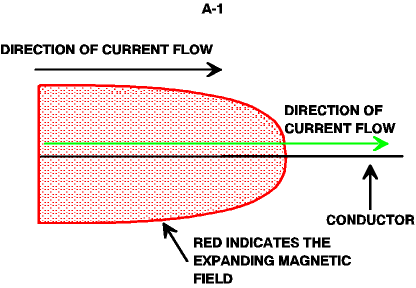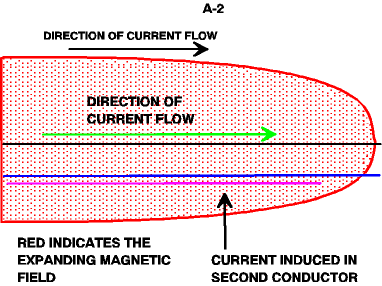The Antenna from the Top Down
A simple antenna, such as a dipole, radiates the signal from the antenna because there is a sudden change in the electrical constants of the line. In this case, when the alternating radio frequency current hits the end of the antenna, the signal is reflected back and forth up and down the wire which generates standing waves on the antenna. Not the feedline, just the antenna. So, there is an intense electromagnetic and electrostatic field generated around the two elements of the antenna. This field is then transmitted through the atmosphere, via the reflections from the earth and the different layers of the ionosphere until it either becomes too weak to detect or it strikes another antenna.
When the fields strike another antenna, weak currents and voltages are then generated in the conductors that make up the antenna. These signals are then carried down the feed line to the receiver where they are detected. So now the antenna operates in reverse and now converts the electromagnetic and electrostatic fields back into voltages and currents that can be used by the receiver.
Therefore, the antenna, no matter what type it is, functions as either a transducer where it converts one type of energy to another or as a transformer that transforms energy from one type to another. Either way you wish to look at it, energy is converted back and forth from one type to another.
How an antenna does this is based on basic alternating current theory. Here is how it does it. When a current flows down a conductor, it radiates a magnetic field outward from the conductor. This is illustrated in Figure 1. Then when the current is shut off, the magnetic field collapses. If you have another conductor near and parallel to the first conductor, the second conductor will be cut by the magnetic lines of force. These lines of magnetic energy will then generate a smaller current and voltage in the second conductor that is proportional to the strength of the magnetic field and distance from the first conductor.

Figure 2 shows this. This is basic AC transformer theory and holds true for any frequency of alternating current, but, for our purposes, we will be dealing with radio frequencies only. This is only true about changing currents, not direct current. DC currents have no changing magnetic fields unless the current in the conductor is changing.

If you have ever been on a lake and seen the wake from a passing boat cause other boats to bob up and down in the wake, this is the same thing that is happening electrically with the antennas. You just can’t see the wake, figuratively speaking. But your antenna does and that is what matters.
All antennas operate this way, regardless of what frequencies they are used on. The different types of antennas all do the same thing, transform current into energy fields that are radiated into space, in this case, the space between the earth and the different layers of the ionosphere.
Originally posted on the AntennaX Online Magazine by Richard Morrow, K5CNF
Last Updated : 14th March 2024
